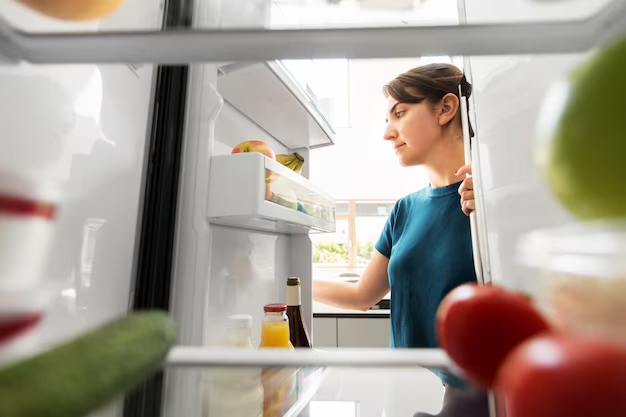Maximizing Food Safety During Power Outages: How Long Is Your Refrigerator Good Without Power?
Picture this scenario: you're in the middle of preparing a feast, and suddenly, the power goes out. Panic might ensue as you wonder how long your refrigerator will keep your food safe. In this guide, we aim to clarify the topic of refrigerator shelf life during power outages, something many of us might face sooner or later. Understanding how long your perishable goods remain safe without electricity is crucial for food safety and minimizing waste.
🕒 Understanding the Time Frame
H2: What Is the Typical Time Limit?
Refrigerators are designed to maintain a safe internal temperature to preserve food. Generally, a fully-stocked refrigerator will keep food safe for about 4 hours without power, provided that the door remains closed. Keeping the door shut is a critical measure to ensure that the refrigerator maintains its internal cool temperature for as long as possible. Meanwhile, a freezer, if full, will hold its temperature for approximately 48 hours and about 24 hours if half-full.
H3: Factors Affecting This Duration
While these are general guidelines, several factors can affect how long your fridge remains cold during an outage:
- Ambient Temperature: Higher room temperatures can increase the appliance's internal temperatures at a faster rate.
- Contents of the Fridge: A fully stocked fridge tends to perform better than an empty one as the cold food acts as additional insulation.
- Type and Model: Different makes and models have varying standards for insulation and energy efficiency.
🏠 Practical Steps to Prepare
H2: Stocking Up and Organization
To be better prepared for unexpected power cuts, consider these organizational tips:
- Purchase Ice Packs: Keep a supply of ice packs that can be strategically placed within the fridge or freezer to help maintain cold temperatures.
- Organize Smartly: Store items like dairy and meat towards the back of the fridge where it tends to be colder. Utilize transparent bins for easier access and to prevent unnecessary door opening.
- Label Your Food: Use labels with dates to keep track of the freshness of your perishables.
H3: During the Outage: What to Do?
- Resist the Temptation to Open the Door: Each time the door is opened, cold air escapes, reducing the time your food remains safe.
- Use a Thermometer: Place appliance thermometers in both refrigerator and freezer to monitor the temperatures after the outage starts. Refrigerators should be at or below 40°F and freezers at or below 0°F to be considered safe.
- Separate Foods: Isolate meat products from other goods to prevent contamination in case thawing occurs.
🥶 Post-Outage Action Plan
H2: Evaluating Food Safety
Once power is restored, examine the following before consuming or refreezing any food items:
- Check Thermometer Readings: If the fridge or freezer maintained safer temperatures, most foods should still be safe.
- Conduct the Smell Test: Foods with a noticeable unpleasant odor should be discarded. However, not all spoiled foods will emit a bad smell.
- Texture and Appearance: Any foods with an unusual or slimy texture should be thrown out.
H3: Food Specific Guidelines
Here's a quick guide on perishable food safety post-outage:
- Dairy: Milk, cheese, and yogurt may be compromised if over 40°F for two hours or more.
- Fresh Produce: Wilting isn’t always an indicator of spoilage, but check items for slimy textures or off-smells.
- Meats: Ground meats, poultry, seafood, and food with sauces should generally be discarded if above 40°F for two hours or longer.
🍲 Creative Ways to Minimize Waste
Instead of throwing out potentially affected food items, consider these waste-reducing alternatives:
- Preserve Foods in Jars: Pickling or fermenting can give new life to some vegetables that would otherwise spoil.
- Cook Immediately: Prepare meals with moderately thawed foods as soon as the power returns to avoid waste.
- Sharing is Caring: If a freezer is about to go above safe temperatures, cooking a massive meal and sharing with neighbors ensures less wastage.
🔑 Key Takeaways and Tips
Here’s a quick guide to remember key points in handling a power outage:
- 🚪 Keep Doors Closed: Essential for maintaining internal temperatures.
- 🕒 Be Time-Savvy: 4 hours for refrigerators, 48 hours for full freezers.
- 🌡️ Use Thermometers: Essential for evaluating safe food temperatures.
- ❌ When in Doubt, Throw It Out: Always prioritize health over saving food.
- 🍋 Get Creative to Prevent Waste: Transform what you can while you still can.
By arming yourself with knowledge and preparation, dealing with an unexpected power outage becomes much less daunting. Staying informed and ready not only protects your food but also ensures a safe and healthy environment for all members of your household in times of uncertainty. Keep this guide handy, so you're always one step ahead. Safe saving and happy storing!
